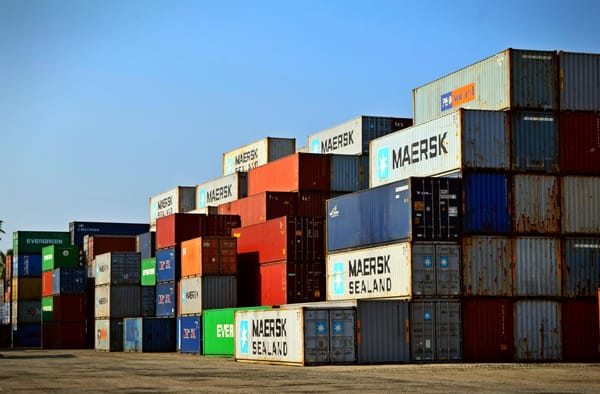How to Parse Invoices Using GPT
Learn how to transform invoice processing with GPT: Extract accurate data automatically to make your business work smoother.

In today's business world, efficiency is vital. Gone are the days of manual data entry and tedious document processing. Enter the era of GPT-powered data extraction, transforming how we handle invoices and transform information into actionable insights.
The traditional methods of parsing PDF invoices have served their purpose but come with limitations. Manual data entry is time-consuming and prone to errors. Zonal OCR (Optical Character Recognition) requires predefined templates and struggles with variability. Pre-trained AI models offer a leap forward but often need more flexibility to adapt to diverse document formats. This is where GPT-powered data extraction, like Airparser, shines, offering a seamless, accurate, and adaptable solution.
The Evolution of Invoice Parsing Over Time: From Manual Entry to Pre-Trained AI Models
When it comes to parsing PDF invoices, businesses have traditionally relied on various approaches to extract and process critical data. Let's explore three common methods along with their advantages and disadvantages:
1) Manual Data Entry
The oldest method in the book involves hand-keying data from invoices into accounting software.
Advantages:
- Control and accuracy: Manual entry allows for meticulous verification and validation of invoice data.
- Customization: Users can tailor the data entry process to specific requirements and preferences.
- Cost-effective for small volumes: Suitable for businesses with low invoice volumes.
Disadvantages:
- Time-consuming: Manual data entry is labor-intensive and can be slow, especially for large volumes of invoices.
- Error-prone: Human errors in data entry can lead to inaccuracies and inconsistencies.
- Scalability challenges: Not scalable for businesses dealing with high volumes of invoices.
2) Zonal OCR
Another technique for extracting specific data from predefined zones within a PDF invoice is through Zonal OCR. This method involves defining precise areas of the invoice where data is situated, such as vendor name, addresses, customer name, total amount, ordered items, invoice number, invoice date, etc. By delineating these zones, Zonal OCR enhances the accuracy and efficiency of invoice parsing.

To utilize Zonal OCR for invoice parsing, an initial step involves analyzing a sample PDF invoice to pinpoint the locations of relevant data fields. These fields are then designated as zones with labels, and the OCR software is trained to extract data within these specified areas. However, it's important to note that this approach is limited to invoices with the exact same layout as the sample invoice. Invoices with different layouts or sources require the creation of separate templates for effective parsing.
Advantages:
- Automation: Zonal OCR can automatically extract data from predefined regions on invoices.
- Time-saving: Streamlines the data extraction process and reduces manual intervention.
- Improved accuracy: Helps minimize errors associated with manual data entry.
Disadvantages:
- Template dependency: Requires predefined templates for accurate data extraction.
- Limited flexibility: May struggle with variations in invoice layouts and formats.
- Training and maintenance: Regular updates and adjustments are needed to ensure optimal performance.
3) Pre-trained AI Models
Another approach to parsing PDF invoices is to use pre-trained artificial intelligence models. These models are trained on a large dataset of invoices to automatically extract relevant information like vendor details, line items, and totals. However, they often need fine-tuning for specific document types and may not handle unexpected formats well.
Advantages:
- Advanced automation: AI models can intelligently extract data from invoices with high accuracy.
- Adaptability: Capable of learning and improving over time to handle diverse invoice formats and layouts.
- Scalability: Suitable for processing large volumes of invoices efficiently.
Disadvantages:
- Lack of control over extracted information: You have limited control over what information is extracted and how it is extracted. Pre-trained models are trained on a specific dataset and may not be able to extract all the relevant information from an invoice, particularly if the invoice contains different data than the dataset used for training or if the layout is very different/non-standard.
- Initial setup and training: Requires time and resources to train the AI model for specific invoice requirements.
- Cost: Implementing AI solutions may involve upfront costs for development and integration.
What is a GPT Parser?
A GPT (Generative Pre-trained Transformer) parser is an advanced tool that leverages the power of AI and natural language processing to extract structured data from unstructured documents. It is designed to understand and interpret the context and content of various documents, including emails, PDFs, invoices, contracts, and more.
Unlike traditional data extraction methods that rely on fixed templates or specific patterns, a GPT parser can dynamically adapt to documents' diverse formats and styles. It uses machine learning algorithms to learn from the data it processes, continuously improving its accuracy and efficiency.
One of the critical features of a GPT parser is its ability to handle natural language, which makes it particularly effective for extracting information from human-written texts. Many GPT parsers incorporate OCR (Optical Character Recognition) technology as the initial step to convert scanned documents into editable text. By leveraging OCR, a GPT parser can efficiently process invoices and other documents that are originally in a non-editable or non-text format, such as scanned PDFs or image files, and extract relevant information with high accuracy.

Advantages of Using the GPT Parser for Invoices
1) Adaptability: Unlike traditional PDF parsing tools, GPT understands the meaning of the data it is analyzing, rather than just recognizing patterns. This means that it can accurately extract information from invoices with different layouts and formats, and even handle invoices from multiple vendors with unique formatting styles. Additionally, GPT can learn and improve over time, allowing it to adapt to new invoice formats and vendor-specific nuances with ease.
2) Accuracy: GPT parsers are trained on vast amounts of data, enabling them to understand and extract information accurately. This reduces errors compared to manual data entry and other traditional methods.
3) Efficiency: Automating the data extraction process with a GPT parser significantly speeds up the handling of invoices. It can process large volumes of documents in a fraction of the time it would take manually, freeing up valuable resources for other tasks.
4) Scalability: As the volume of invoices grows, a GPT parser can quickly scale to meet the increased demand without sacrificing performance or accuracy.
5) Integration: GPT parsers like Airparser can seamlessly integrate with existing workflows and systems. They offer various export options, including Google Sheets, Excel, and integration with over 6000 apps via platforms like Zapier and Make.
6) Cost-effectiveness: By automating the invoice parsing process, businesses can reduce labor costs associated with manual data entry and minimize the risk of costly errors.
GPT parsers represent a significant advancement in data extraction technology. Their ability to accurately and efficiently process invoices makes them an invaluable tool for businesses to streamline financial operations and enhance overall productivity.
How to Parse Invoices Using GPT with Airparser?
Parsing invoices can be tedious, but with the help of GPT-powered tools like Airparser, it has become easy. Airparser is an intelligent parser that can change the way you extract data from invoices and create automation workflows of any complexity. Built on the powerful capabilities of the GPT parser, it is a specialized tool designed to effortlessly parse data from a wide range of document types, including PDFs, images, and more. Its advanced technology allows for seamless extraction of key information from invoices, such as vendor details, line items, totals, and more.
Another standout feature of Airparser is its flexibility and compatibility with various platforms. Users can export parsed data from invoices to popular tools like Google Sheets, Excel, webhooks, or leverage Zapier and Make to create custom automation workflows. This enables seamless integration with accounting software such as QuickBooks Online, Wave, Xero, Zoho Books, and more, streamlining the data entry process and eliminating manual errors.
Here's how you can use Airparser to parse invoices using GPT:
- Set Up Airparser: Sign up for Airparser and set up your account. The process is straightforward and takes less than a couple of minutes.
- Import Invoices: Airparser offers various methods for importing your invoices. You can forward emails and attachments to Airparser's inbox, upload files manually, or use API automation to import documents from different sources.
- Create Extraction Schema: Define the data fields you want to extract from your invoices. This could include invoice numbers, dates, amounts, vendor details, etc.
- Extract Data with GPT-Powered Parser: Once the extraction schema is set, Airparser's GPT-powered parser gets to work. Regardless of format or layout, it intelligently extracts the specified data from the invoices. The AI engine understands the context and content of the documents, ensuring accurate and efficient data extraction.
After extracting the data, you can export it in real time to various formats and platforms. Airparser supports exporting to Google Sheets, Excel, webhooks, APIs, and over 6000 apps through Zapier and Make. This seamless integration lets you easily incorporate the extracted data into your workflow or accounting software like QuickBooks Online, Wave, Xero, or Zoho Books.
Using Airparser to parse invoices with GPT, businesses can significantly reduce manual data entry, minimize errors, and save time. The automated process streamlines invoice processing, making it faster and more efficient.
In Summary
The process of invoice parsing plays a crucial role in streamlining financial operations and ensuring accurate data entry for businesses of all sizes. While traditional approaches such as manual data entry and zonal OCR have their limitations in terms of efficiency and accuracy. The advent of advanced GPT parsers allows users to transcend the limitations of traditional methods and harness the full potential of modern technology to streamline their workflows.
Airparser simplifies the way businesses handle invoice processing with its GPT-powered parsing technology. With features like OCR, support for multiple document types, and integration with over 6000 apps, Airparser is a comprehensive solution for businesses looking to streamline their invoice management.




